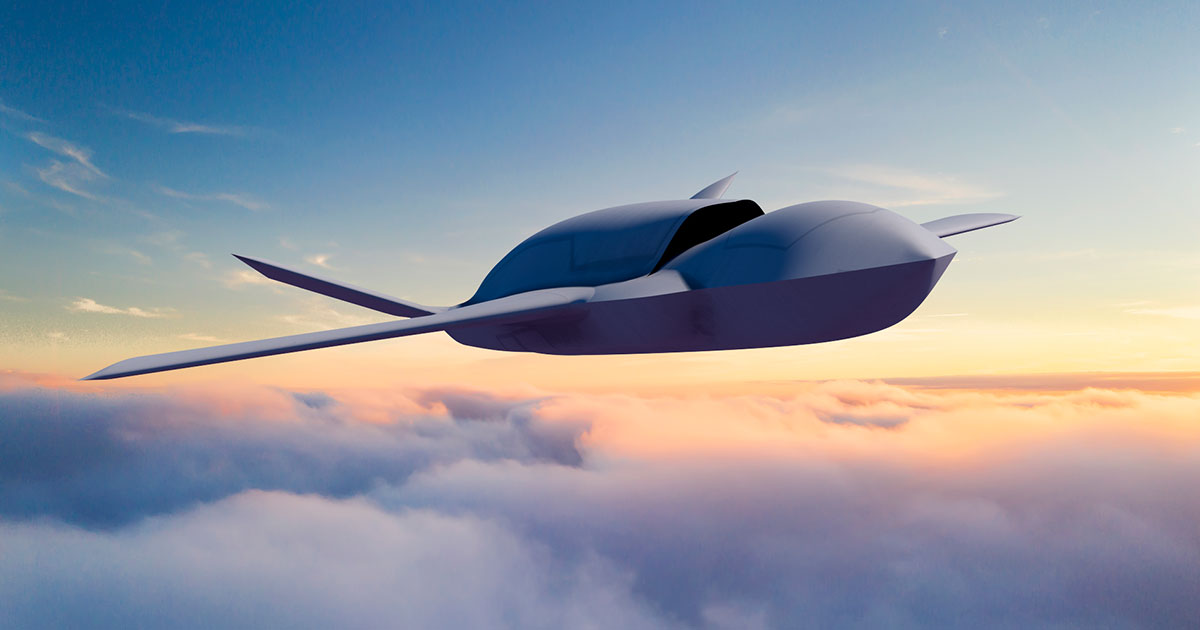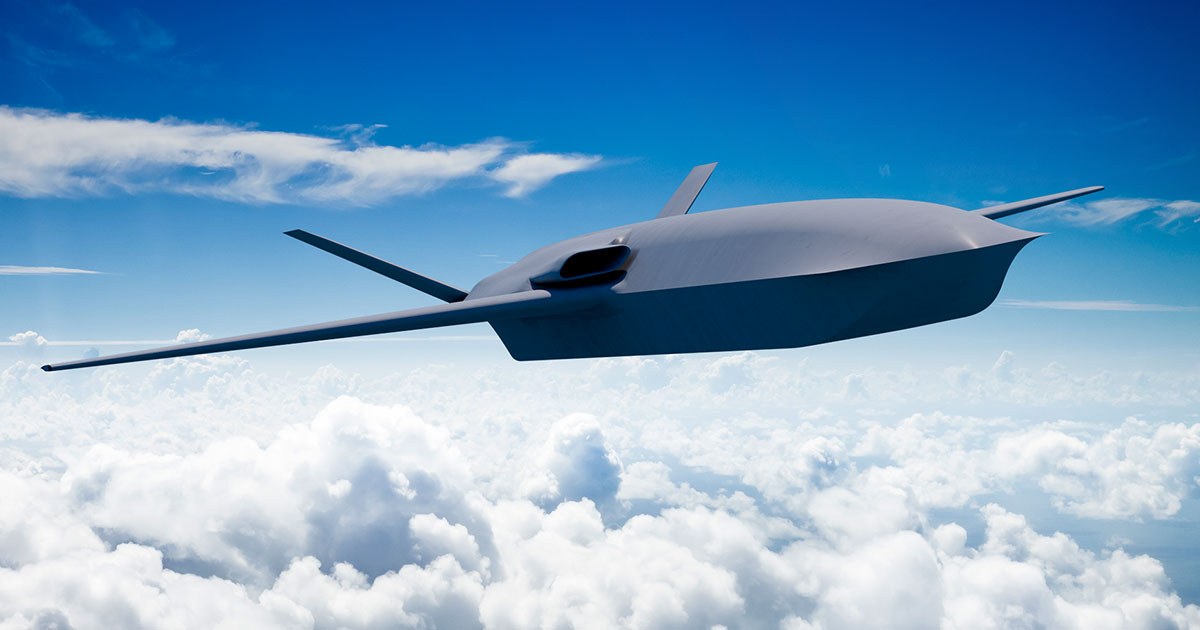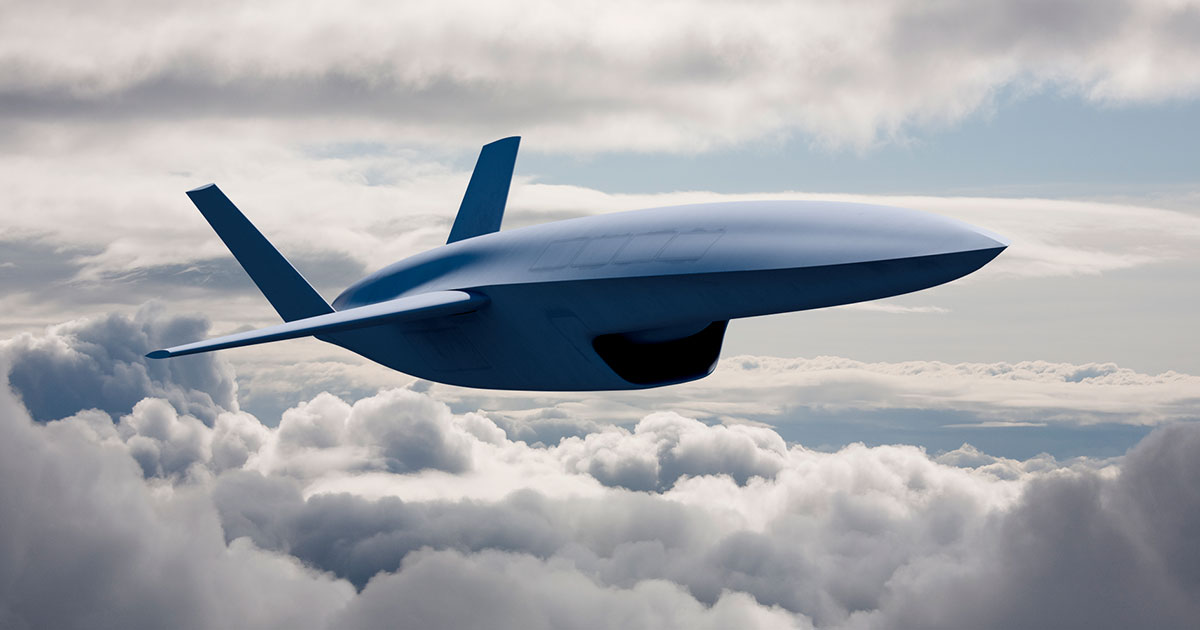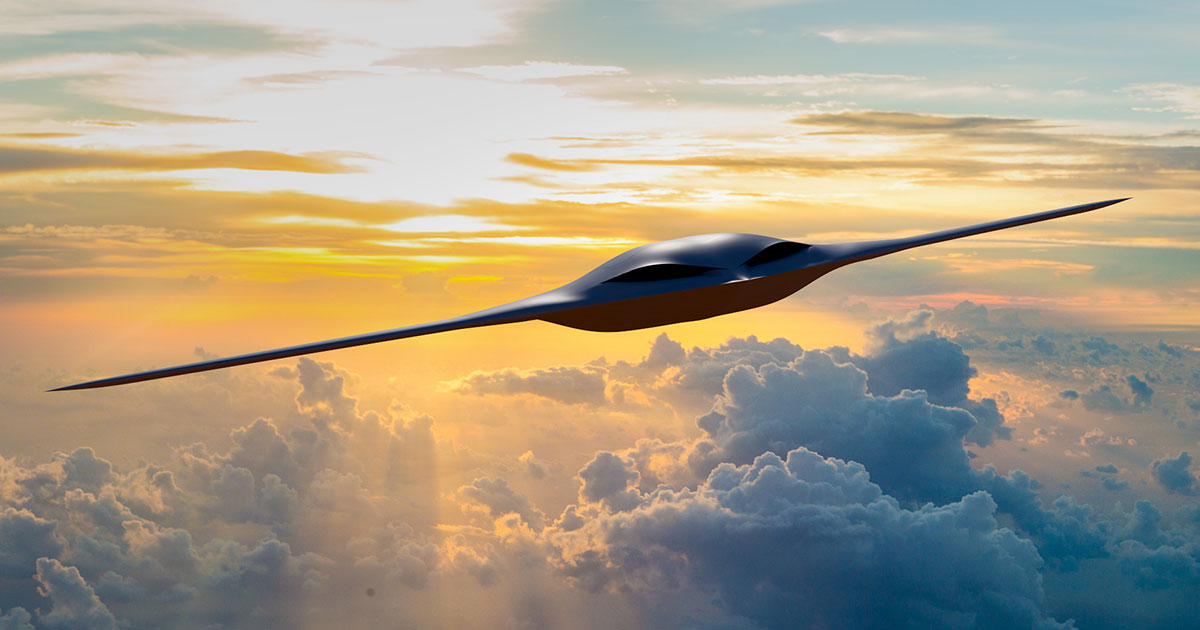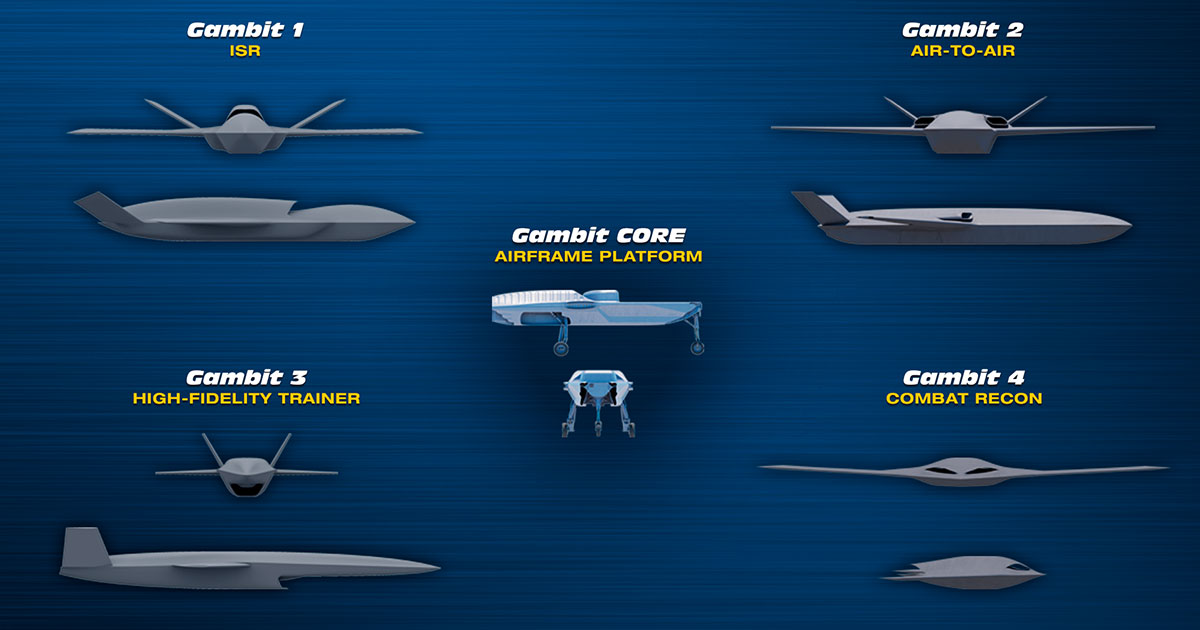Leading The Way In Autonomous Collaborative Aircraft
Discover the innovative Gambit Series from GA-ASI.
Air control is a cornerstone of American and allied military power – but it can’t be taken for granted.
An array of high-tech new aircraft and threats mean that the old ways of establishing and keeping air superiority will be increasingly challenged. In order to keep ahead, the U.S. Air Force and its trusted partners must adapt the way they work.
That’s why the Air Force is turning to a new breed of collaborative combat aircraft – highly autonomous unmanned aircraft that will vastly expand what’s possible for human pilots aboard fifth-generation and newer fighters.
And that’s why the world leader in unmanned aircraft, General Atomics Aeronautical Systems, Inc., has created the world’s first family of unmanned collaborative aircraft: Gambit.
What pilots need
What do tomorrow’s pilots need? They need additional mass in weapons, sensing and support options. Air dominance has always been achieved by gaining and maintaining air superiority both in the air and against integrated air and missile defense systems. But new threat systems demand new capabilities and technologies to both fight and survive in increasingly lethal environments.
Tomorrow’s pilots on the leading edge of a fighter sweep, or a strike package, need something that can go ahead of them and, if necessary, stay ahead of them. Additionally, these new wingmen need to be able to leverage high levels of autonomy to implement tasks and missions directed by their manned counterparts.
These new unmanned systems will be less expensive than human-piloted fighters. They also put a boundary between hostile aircraft and friendly ones in which no people are at risk. And being able to field them in larger numbers also helps U.S. and allied forces preserve several advantages over adversaries.
One is that the collaborative aircraft can work together to image and sense targets. Low-observable jets are built to delay detection from one aspect – usually to frustrate a ground-based radar attempting to detect them ahead and from below. But when two or three or more autonomous Gambit aircraft work together to image and sense a target from multiple aspects in the air, that helps greatly with detecting and tracking it.
Depending on how they’ve been instructed, the unmanned systems might do nothing. They might pull back. They might relay the track they’ve developed to a human-piloted aircraft. Or, in the event of hostilities, they might take action as directed to release ordnance against the target.
The Gambit family
Counter-air is only one of the many missions required to sustain superiority and only one of the applications for the Gambit series. The aircraft might also help suppress enemy air defenses, support ground interdiction, escort high-value air assets or more. The system is so versatile because it incorporates four distinct models, highly common to reduce cost and production complexity, but each keyed to a specialized application.
One Gambit is to be configured to carry both air-to-air and / or air-to-ground weapons to support air superiority sweeps and strike packages. Another Gambit aircraft has a low-observable design coupled with mission systems to augment strike packages with enhanced capabilities in the radio frequency spectrum. A third aircraft is dedicated to long-endurance intelligence, surveillance and reconnaissance to build and maintain battle space awareness to support manned and unmanned inbound strike packages. And finally, because air superiority begins with the training and qualification of expert human pilots, one Gambit model is a dedicated aggressor, for use in weapons school and similar environments to sharpen air combat skill.
Each aircraft is roughly 70 percent common, with a universal core similar to the practices within automaking: once a car manufacturer assembles a frame, chassis, wheelset and other components, it can head down one production line to become a family sedan or down another to become a luxury model with a different interior. So too with Gambit, making each model simpler and less costly to produce.
What also differentiates the series is the industry-leading software and other support systems that enable the aircraft. GA-ASI is the clear leader in autonomous aircraft systems, with a number of first-of-their kind demonstrations supporting U.S. Air Force or other advanced programs.
In November, for example, a company-owned MQ-20 Avenger unmanned jet proved it could detect and track airborne targets while meshed with a number of other real and virtual aircraft. Before that, an Avenger demonstrated a number of groundbreaking autonomous capabilities in a “chase and avoid” exercise with real-time updates from infrared search-and-track sensors. Before that, one real Avenger and five simulated software aircraft worked together via artificial intelligence and machine learning to prove out their search and defense capabilities. And so on.
These autonomy and other demonstrations follow decades of earlier pathbreaking by GA-ASI in unmanned aviation, which include more aircraft delivered than any other company and far more operational time – more than 8 million flight hours, many of them in combat or other adverse conditions.
All this is what makes GA-ASI better positioned than anyone else to support the U.S. Air Force’s need for collaborative combat aircraft. The service’s most recent vote of confidence took place a few weeks ago, when the Air Force Research Laboratory awarded GA-ASI a contract for the next phase of its development program, one it calls the Off-Board Sensing Station.
Under that agreement, GA-ASI is building and will fly an aircraft to demonstrate the state of the art and validate what’s possible with collaborative platforms. This one will be unarmed and dedicated toward the remote sensing and search functions – giving a human fighter pilot another set of eyes and ears aboard an unmanned jet that scouts ahead and takes another perspective on what’s in the air.
The Gambit series of aircraft build from this base – a foundation unlike any other in the aerospace industry.
